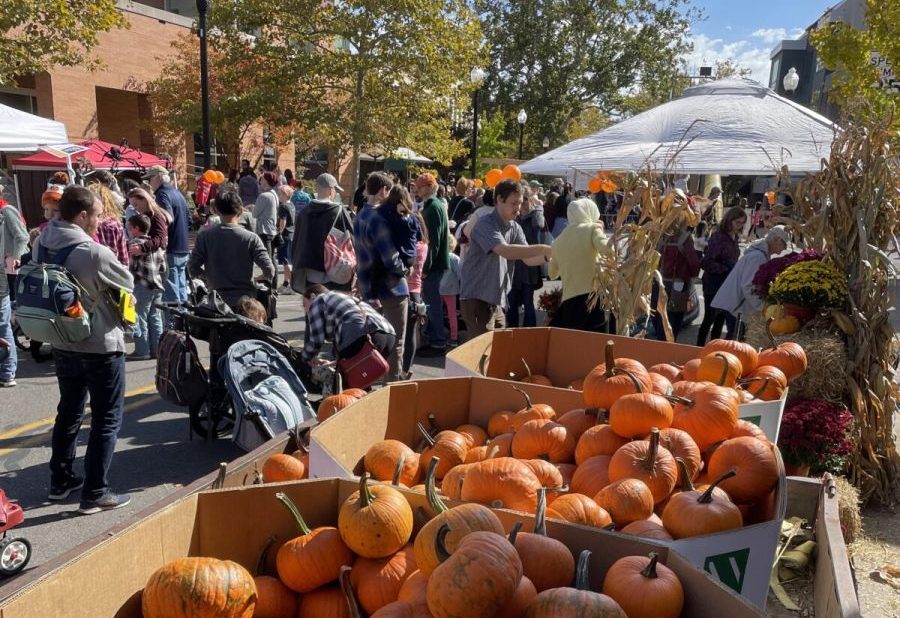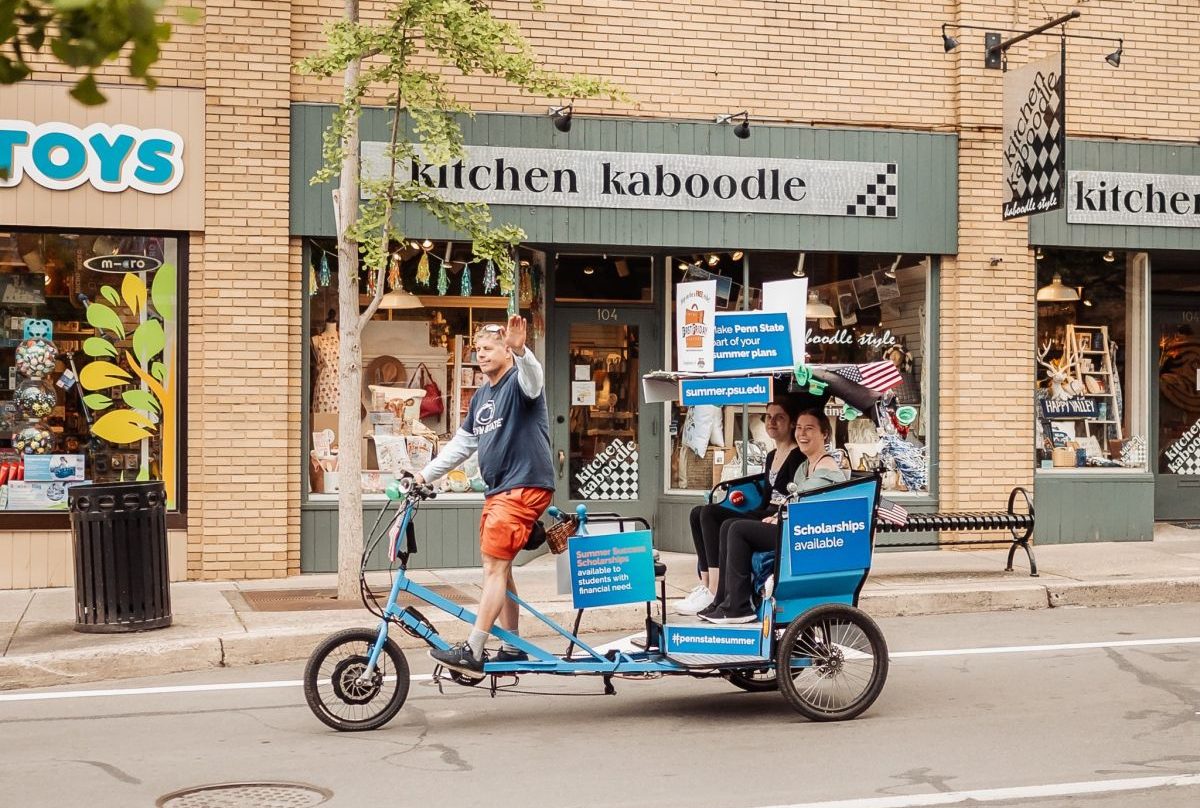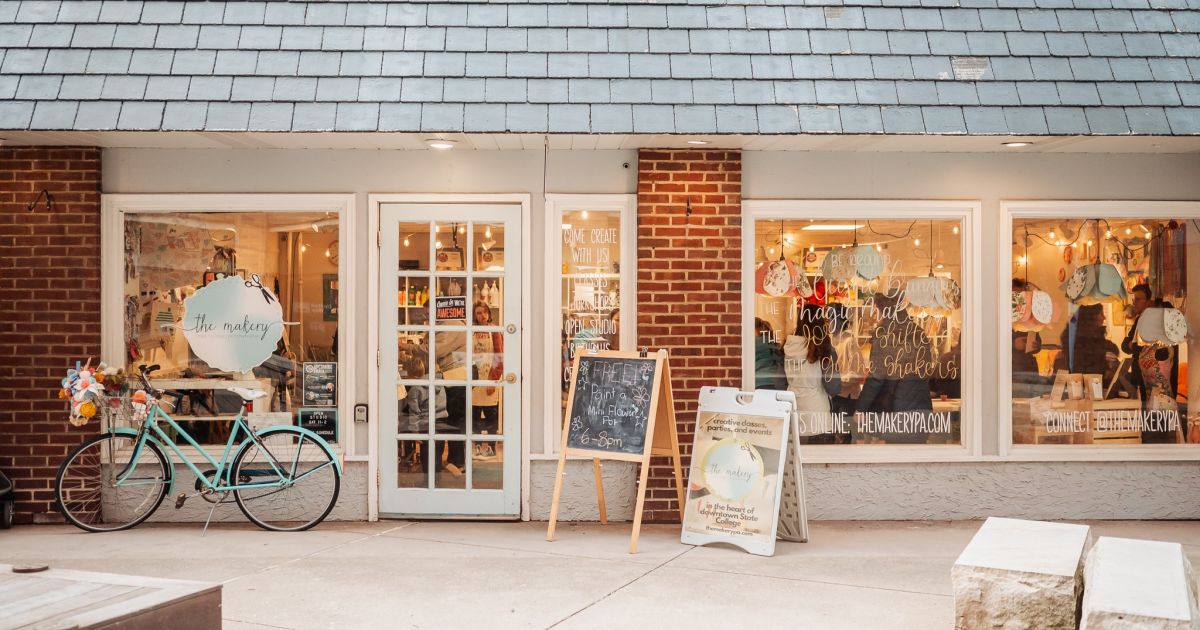
By Cara Aungst
“Workers no longer need to be downtown because companies no longer need to be downtown. And with that in mind, we have to be honest with ourselves and ask, ‘Why should anyone want to come to downtown?’”
This jarring statement was not made about State College, but rather downtown Pittsburgh, in Pittsburgh Quarterly’s “Remaking Downtown Pittsburgh,” which invited local leaders to tackle the city’s challenge of growth and occupancy after COVID. Bill Demchak, chair and CEO of PNC Financial Services Group, held no punches in his analysis: “Downtown isn’t coming back. At least not the downtown we used to know.”
The city is far from alone — a quick search shows similar stories about Chicago, Philadelphia and New York. It begs the question: Why is downtown State College not in the same boat?
The answer is tied to downtown State College’s makeup as a college town, as well as its commitment to innovation.
“The idea was that cities would always need office space, and now are challenged with what to do with the space, and how to invoke a sense of community into those spaces?” Jonathan Friedman said.
Friedman has a heritage of investing in State College’s downtown district. His grandfather Sid Friedman was integral to revitalizing downtown State College, purchasing buildings like the landmark Corner Room and Hotel State College, and creating what is now known as Calder Way. His father, Ron Friedman, was involved with the family real estate business and also served as an attorney. (“If you had a house closing between 1984 and 2009, he was probably at your closing,” Jonathan said.)
Jonathan’s aunt and uncle, Edward and Charlene Friedman, managed State College Downtown Properties, a portfolio of commercial, residential and hospitality holdings in downtown State College. A practicing attorney, Jonathan lived in the Chicago area until 2012, when he came back to Happy Valley and joined the business as director of development, leading in the creation of one of the first high-rises in downtown State College, The Maxxen, located on Heister Street. After his uncle’s death in 2020, he became the CEO of the family’s portfolios at Comet Properties.
His experience as a litigator in The Loop in Chicago before returning to the town where he grew up has given him a unique insight into both the challenges and opportunities of downtown development. He says that success is tied to being stewards of historic spaces as well as embracing innovation and progress. Here’s what he says sets State College apart.
It’s an influx of new people
He says that State College is “very lucky” because of its proximity to Penn State.
“We always have a new group of 10,000 students each year, who bring their parents and families. That’s 40,000 people discovering new things and reliving some of the things that they’ve discovered. We have alumni coming in for football games. It’s a melting pot of the past, present and future. That is what keeps these places engaged and growing,” he described.
“It’s a melting pot of the past, present and future.”
This number is rapidly growing, too. In 2023, Penn State reported 16,239 first-year undergraduate students, an increase for the fifth consecutive year. Additionally, The Happy Valley Adventure Bureau recently released a study showing that Centre County reached a record 5 million person trips last year, a 3.1% increase over 2022. This total includes 3.2 million day trips, 1.8 million overnight trips and an estimated visitation spend of over $1 billion.
It’s about student housing
Friedman referred to a zoning amendment in 2013 that allowed the construction of high-rises along the edges of College Avenue and Beaver Avenue to provide more student housing along with commercial space.
“What we’ve seen in regards to Class A real estate, the big buildings that we are seeing going up… the value is created in the beds above the commercial space. Commercial space has now become a viable place to invest, and hopefully, within the next 12–18 months, we’ll see those spaces filled with new and interesting tenants,” he explained.
Ed LeClear, planning director at the State College Borough, agreed. He said that, with zoning in the 1980s and 1990s, growth in student housing was pushed into neighborhoods and townships, but new zoning in 2005, 2007 and 2013 created a zoning environment that allowed for larger buildings downtown with a much larger residential footprint.
“This coincided with a huge increase in purpose-built student housing nationally,” he said in an interview in 2023.

It’s an ongoing commitment toward local business
Friedman said that another thing that sets downtown State College apart is its shopping experience.
“In places like Philadelphia and Pittsburg, there needs to be big storefronts like Saks and Louis Vuitton. Here, we see success with retailers who are more local and don’t just sell you a product but sell you the purpose and intent: places like Harpers, Appalachian Outfitters, and Rapid Transit,” he said.
“Here, we see success with retailers who are more local and don’t just sell you a product but sell you the purpose and intent.”
He added that, while nostalgia is an economic driver, there is also immense opportunity to innovate and create new memories in downtown State College.
“Antifragile Brewing is a perfect example of something that has been very successful in one of our buildings. They drive people in there because they are trying something different. Those are the kinds of ideas that we should rally around,” he said.

It’s an eye on the future
“I think the future of State College will be thoughtfully developing the town economically and developing smaller pieces to make truly interesting spaces where we at a human level can experience it and have it still be State College, but a better version,” Friedman said.
Most of the downtown is not new, he emphasized, with some of the “newer” buildings built nearly 50 years ago, so it is important to recognize the difference between nostalgia and sentimentality when looking to the health and development of downtown State College.
“We all have great memories in downtown State College, but you need to ask yourself, was it the restaurant itself or the good memory from that restaurant? We create memories that aren’t so much built on the place itself, but the experiences we have while we are here. I think we have the capacity to do that for everyone in every generation of visitors and students, but we have to accept that play. We have to accept that some of these places are going to go away and we’re going to try to fill [the spaces with] new memories,” he said.
Cara Aungst writes about people, innovation and how Happy Valley ideas change the world. She can be reached with story ideas and comments at caraaungst@gmail.com.

